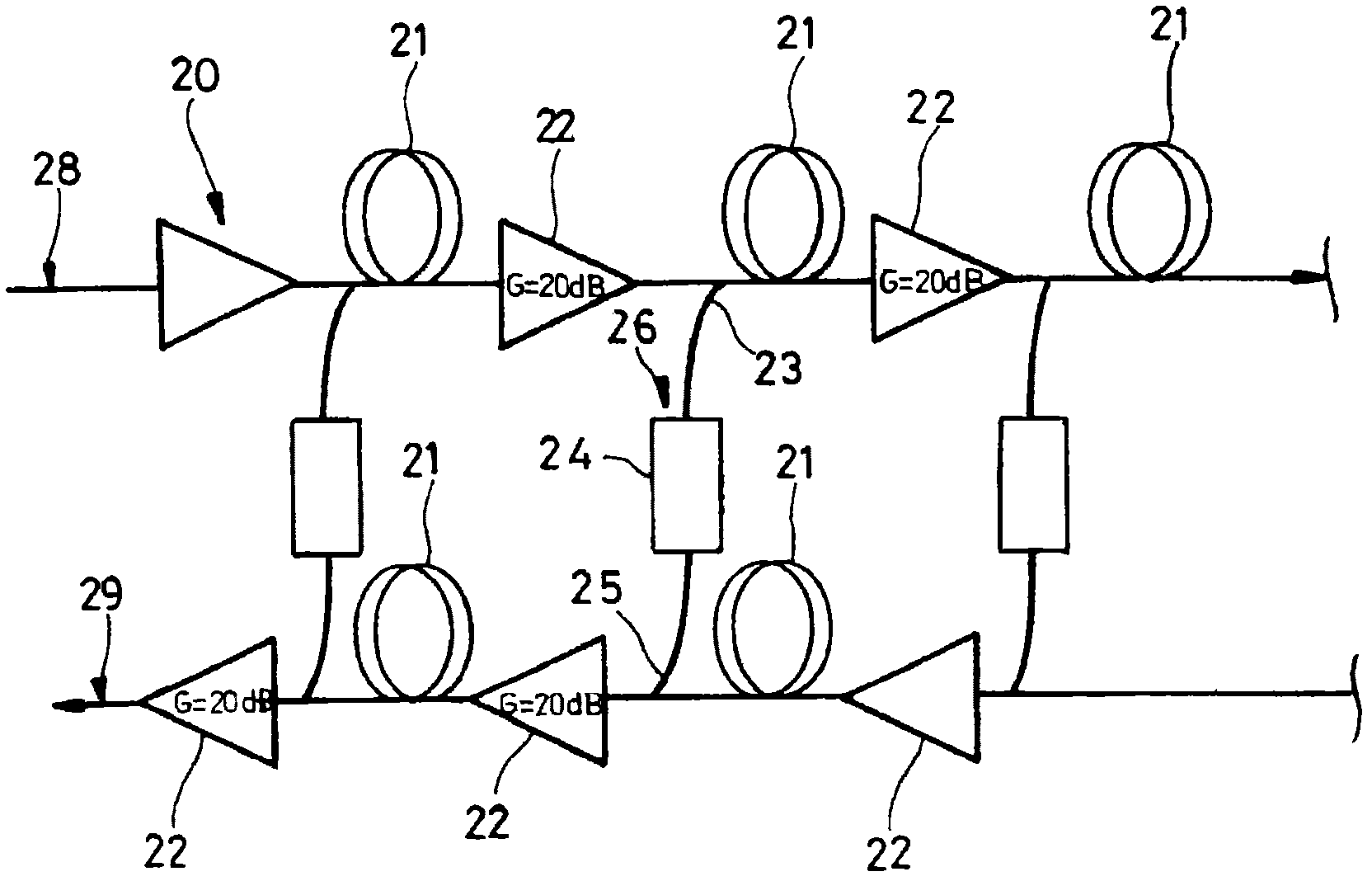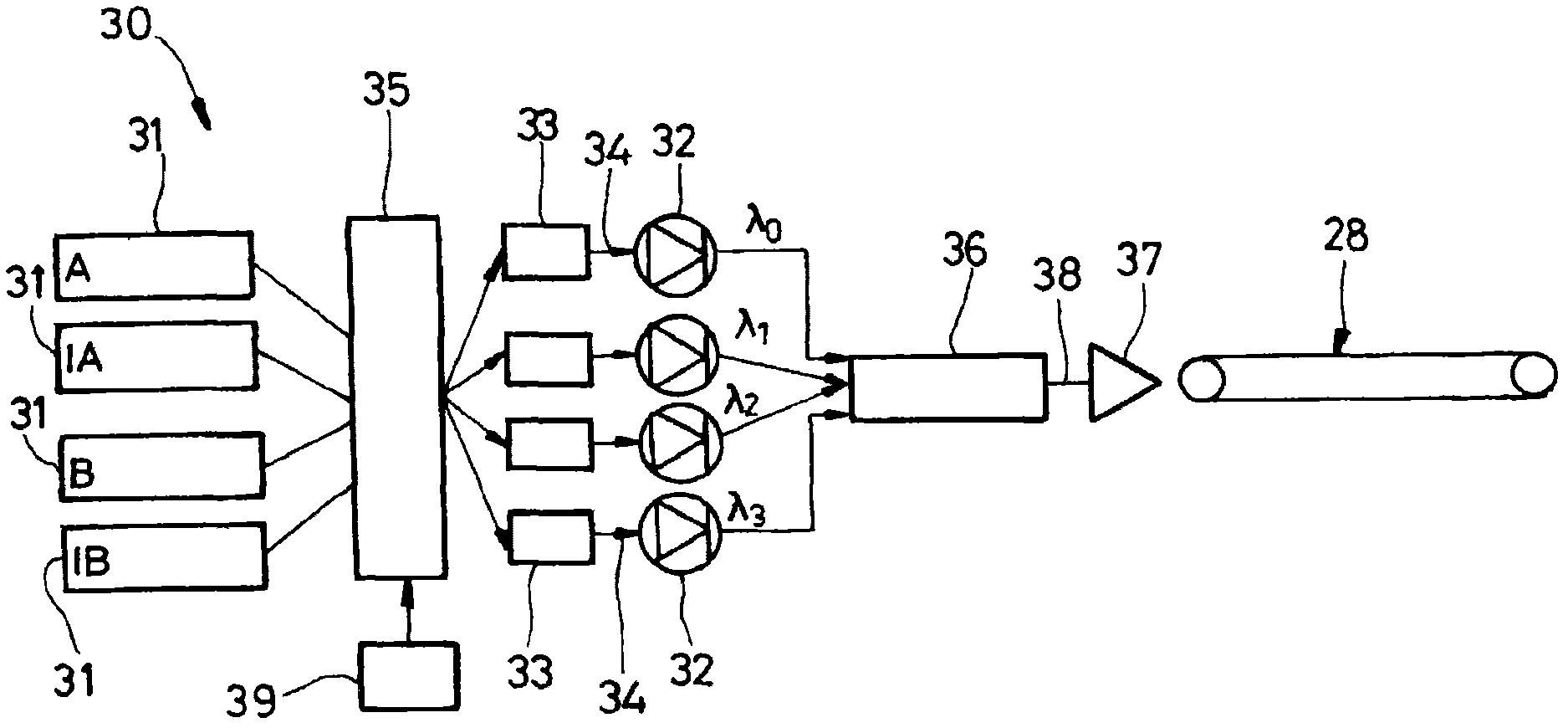Monitoring a system using optical reflectometry
A technology of optical reflection and monitoring system, which is applied in the direction of reflectometer, transmission system, and optical instrument test for detecting backscattered light in the time domain, and can solve problems such as power and signal-to-noise ratio limitations
- Summary
- Abstract
- Description
- Claims
- Application Information
AI Technical Summary
Problems solved by technology
Method used
Image
Examples
Embodiment Construction
[0037] refer to figure 1 , the optical reflectometer measurement device 10 is coupled to a system 15 in which the measurements have to be obtained. The device 10 includes: an excitation module 11 coupled to the system 15 so as to inject optical excitation signals into the system on a plurality of wavelength channels as indicated by arrow 13; Receive backscattered optical signals corresponding to the excitation signals. The coupling of the modules 11 and 12 to the system 15 may be made by power couplers or any other suitable means, such as optical circulators.
[0038] System 15 may comprise any optical system, especially an optical communication system, such as a passive optical network, or a part of such a system. In the remainder of this document, an embodiment is described in more detail in which system 15 is composed in part of Image 6 The two-way amplified WDM transmission line 20 depicted in the composition. The bidirectional line 20 can be used for longer distance ...
PUM
 Login to View More
Login to View More Abstract
Description
Claims
Application Information
 Login to View More
Login to View More - R&D
- Intellectual Property
- Life Sciences
- Materials
- Tech Scout
- Unparalleled Data Quality
- Higher Quality Content
- 60% Fewer Hallucinations
Browse by: Latest US Patents, China's latest patents, Technical Efficacy Thesaurus, Application Domain, Technology Topic, Popular Technical Reports.
© 2025 PatSnap. All rights reserved.Legal|Privacy policy|Modern Slavery Act Transparency Statement|Sitemap|About US| Contact US: help@patsnap.com



